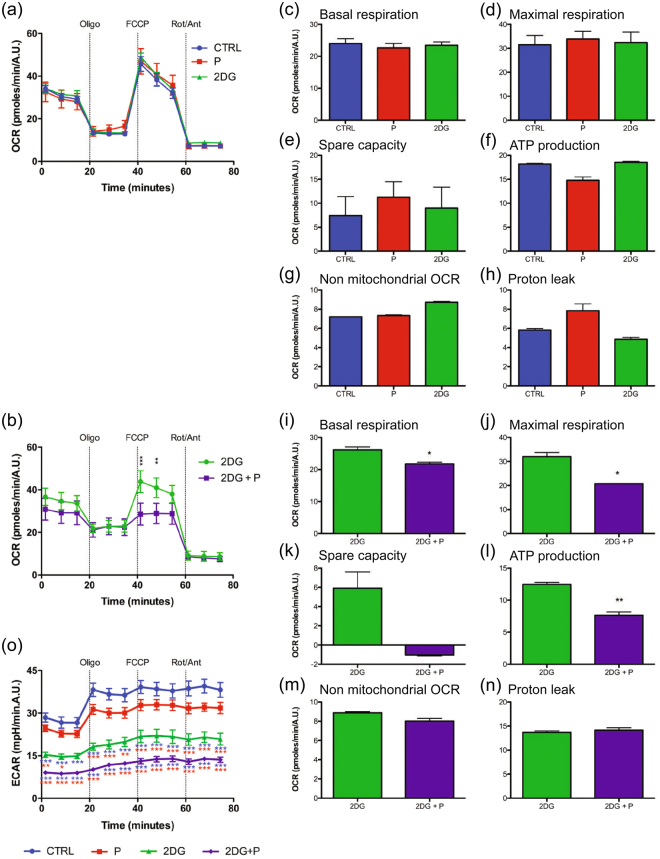Figure 7.
2DG combined with propranolol decreases mitochondrial respiration. PC3 cells were treated with 2DG (2DG) (10 mM), propranolol (P) (100 µM) or both for 24 h. PC3 cells were analyzed for mitochondrial bioenergetics using the Agilent Seahorse XF technology. (a,b) Measurement of basal level of oxygen consumption rate (OCR) was followed by sequential injections of oligomycin, FCCP, and rotenone/antimycin A. (a) The OCR in control (CTRL), P and 2DG conditions were not significantly different. (b) Comparison of 2DG and 2DG+P condition shows a decrease of OCR in the double treated condition. (c–n) Quantification graph of OCR parameter: (c,i) basal and (d,j) maximal respirations. Both are reduced in the 2DG+P condition only. (e,k) Quantification of spare capacity and (f,l) ATP production-related OCR. OCR related to ATP production is significantly decreased in PC3 cells treated with 2DG+P, while spare capacity is not significantly different (p = 0.054). (g,m) Quantification of non-mitochondrial OCR and (h,l) proton leak. These two parameters are not altered by the double treatment. (o) Extracellular acidification rate (ECAR) measured with the Agilent Seahorse XF technology. Measurement of basal level of ECAR was followed by sequential injections of oligomycin, FCCP, and rotenone/antimycin A. The ECAR was not significantly modified in the P condition as compared to the CTRL condition while the ECAR is significantly decreased in the 2DG alone and 2DG+propranolol conditions.

